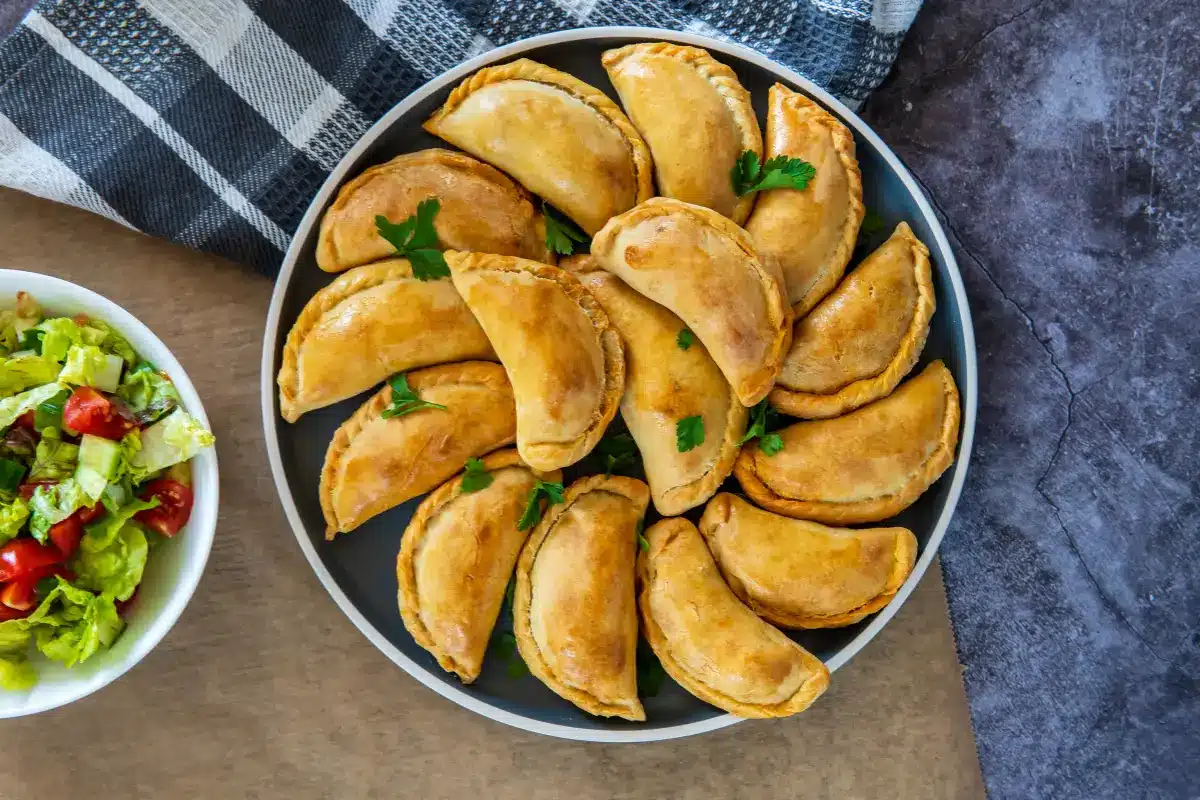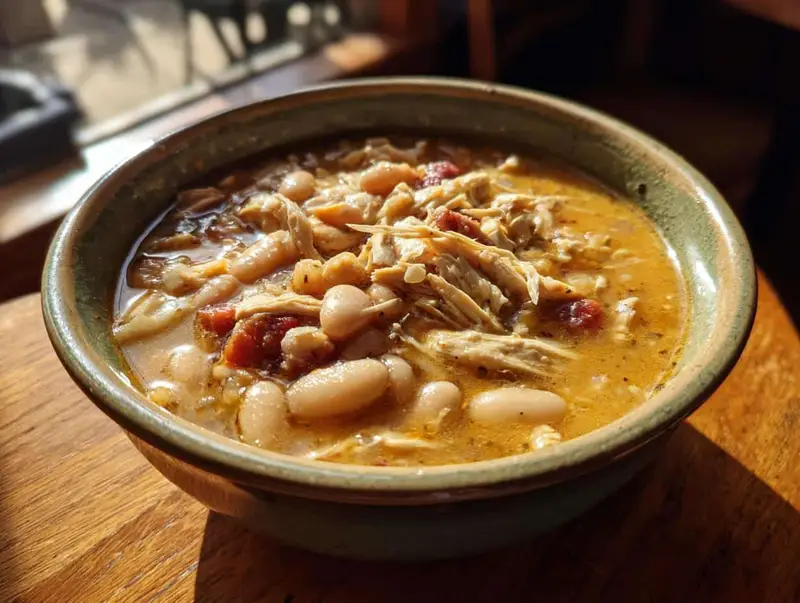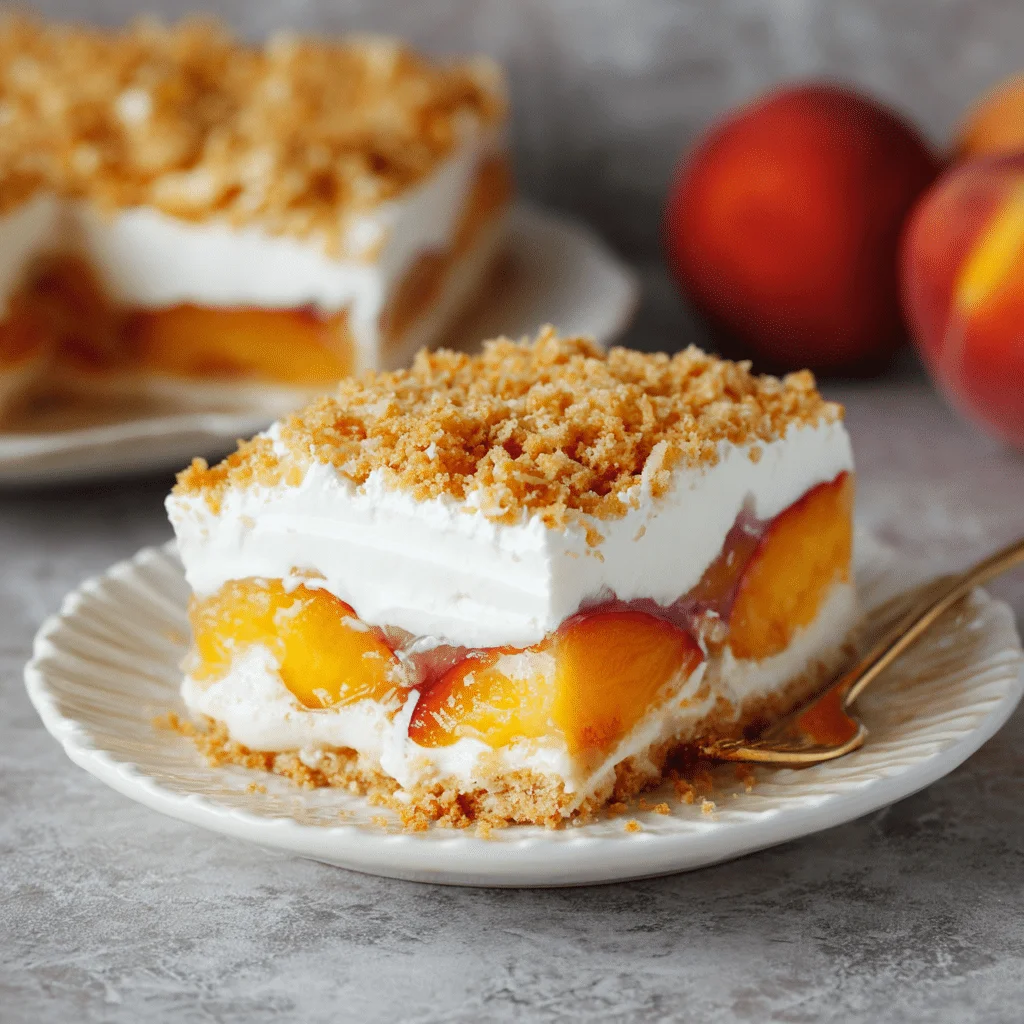Part 1: Introduction to Empanadas Venezolanas
Introduction to Venezuelan Cuisine
Venezuelan cuisine, a splendid tapestry of flavors, reflects a harmonious blend of Indigenous, African, and European influences. Each bite tells a story of conquest, adaptation, and creativity, making it a vibrant part of the country’s cultural heritage. Among the plethora of dishes that grace this cuisine, Empanadas Venezolanas stand out, embodying the warmth and diversity of Venezuela itself.
What are Empanadas Venezolanas?
Empanadas Venezolanas are not just any snack; they’re a culinary masterpiece wrapped in a corn dough cloak, deep-fried to golden perfection. These half-moon delights are stuffed with a variety of fillings, ranging from juicy meats to sumptuous cheeses, each telling its own tale of flavors. But what sets them apart is not just their taste but their role in Venezuelan culture, serving as a bridge between meals, a companion to early morning coffees, and a must-have at any gathering.
So, as we peel back the layers of this iconic dish, we invite you on a journey through the tastes, aromas, and stories that make Empanadas Venezolanas a true symbol of Venezuelan culinary pride. Let’s delve into the history, the artistry, and the regional twists that make these empanadas a dish to remember.
Part 2: Historical Background
The journey of Empanadas Venezolanas through time is as rich and layered as their fillings. These savory pastries have sailed across oceans, transcended borders, and evolved with each generation, becoming a cherished part of Venezuelan culture.
Origins of Empanadas
The story of empanadas begins in the Iberian Peninsula, where they were conceived during the time of the Moorish invasions. This culinary concept traveled to Latin America with Spanish colonizers, where it was warmly embraced and transformed by local traditions and ingredients. In Venezuela, the empanada found a new home, adapting to the tastes and flavors of its people, evolving into what we now know as Empanadas Venezolanas.
Empanadas Venezolanas: A Cultural Symbol
In Venezuela, empanadas are more than just a meal; they are a cultural emblem, representing the country’s diverse culinary landscape. Each region has infused its own identity into the empanada, making it a dish that not only satisfies hunger but also connects Venezuelans to their heritage. From the coastal areas where seafood fills the dough, to the Andean highlands where
potatoes and cheese dominate, Empanadas Venezolanas are a testament to the country’s rich biodiversity and cultural mosaic.
This dish’s ability to unite people, transcending socioeconomic differences, is remarkable. Whether it’s a humble breakfast on the go or a festive addition to the holiday table, empanadas hold a special place in the hearts of Venezuelans. They encapsulate the essence of Venezuelan hospitality, where sharing a meal is an act of love and community.
As we explore the nuances of Empanadas Venezolanas, we delve deeper into the fabric of Venezuelan society, uncovering the threads of history, tradition, and innovation that have woven this dish into the national identity. The journey of empanadas is a vivid illustration of how food can be a powerful connector, bringing people together and telling the story of a nation’s soul.
Part 3: Making Empanadas Venezolanas
The art of making Empanadas Venezolanas is a dance of tradition and creativity, where each step, from preparing the dough to choosing the fillings, is a testament to Venezuelan culinary heritage. Let’s roll up our sleeves and dive into the process that brings these beloved empanadas to life.
Ingredients
At the heart of every Empanada Venezolana is the dough, made from pre-cooked corn flour, water, and salt, offering a gluten-free base that’s both tender and crisp. The fillings, however, are where the creativity shines. From the classic shredded beef, black beans, and cheese, known as “dominó,” to the innovative seafood or plantain fillings, the possibilities are as diverse as Venezuela itself.
Preparation of the Dough
The dough’s preparation is simple yet crucial. Start by mixing pre-cooked corn flour with water and a pinch of salt, kneading until a smooth, pliable dough forms. This dough is then divided into small balls, each flattened into a circle to create the perfect canvas for the fillings. The key is to achieve a balance between thickness and thinness, ensuring the empanada holds its shape without overpowering the filling.
Filling Varieties
Choosing the filling for your Empanadas Venezolanas is like painting on a blank canvas; the options are endless. The traditional fillings reflect Venezuela’s agricultural bounty, featuring ingredients like juicy carne mechada (shredded beef), creamy cheese, and savory black beans. For a twist, some opt for cazón (a small shark), chicken, or even a mix of several ingredients, creating a symphony of flavors in every bite.
Cooking Methods
Once filled and sealed, Empanadas Venezolanas embark on their final transformation. While frying in oil is the traditional method, giving them a golden, crispy exterior, baking offers a lighter alternative. Regardless of the method, the result is always a delightful contrast of textures and flavors, with a crispy shell giving way to a soft, flavorful center.
The process of making Empanadas Venezolanas is a journey through Venezuelan culture, where each step, from kneading the dough to savoring the final product, is imbued with history and tradition. Whether you’re a seasoned chef or a curious foodie, creating these empanadas is an invitation to explore the rich tapestry of Venezuelan cuisine, one delicious bite at a time.
Part 4: Regional Variations
The beauty of Empanadas Venezolanas lies not just in their taste but also in their diversity. As we traverse the vibrant landscapes of Venezuela, we discover that each region adds its own unique twist to this beloved dish, showcasing the rich tapestry of the country’s culinary heritage.
By Region in Venezuela
- Andean Region: Here, the empanadas take on a heartier form, often filled with potatoes, cheese, and meats, reflecting the robust flavors favored in the cooler mountain climates. The dough is sometimes infused with local herbs, adding an extra layer of flavor.
- Central Region: In the bustling cities and coastal areas, Empanadas Venezolanas are a reflection of the urban palate, with fillings like cazón (school shark), a nod to the country’s extensive coastline, and black beans and cheese, representing the fusion of indigenous and Spanish influences.
- Llanos (Plains): The vast plains of Venezuela offer a rustic take on empanadas, with fillings of shredded beef or goat, seasoned with rich spices and herbs, mirroring the simplicity and depth of the plains’ culinary traditions.
- Eastern Region: Here, the influence of the Caribbean is palpable, with lighter, tropical fillings such as shrimp, fish, and even octopus, wrapped in a thinner, crispier dough, perfect for a beachside snack.
- Western Region: Close to the Colombian border, the empanadas often feature a blend of Venezuelan and Colombian flavors, with rice and beans accompanying the more traditional meat and cheese fillings, encased in a cornmeal dough that’s fried to perfection.
- Zulian Region: Home to the famous empanadas de pabellón, this region offers a culinary masterpiece that encapsulates an entire traditional meal – shredded beef, black beans, plantains, and cheese – within the golden crust of an empanada, a true testament to the creativity and richness of Venezuelan cuisine.
Each region’s empanadas tell a story, a narrative woven from the threads of local ingredients, traditions, and culinary techniques. From the Andes to the Caribbean coast, Empanadas Venezolanas serve as a delicious mosaic of Venezuela’s diverse cultures, landscapes, and flavors, inviting us to explore the country’s culinary heritage one bite at a time.
Part 5: Serving and Consumption
Empanadas Venezolanas are much more than a mere dish; they’re a social glue, bringing people together at all times of the day. The versatility in serving and consumption practices around these empanadas highlights their integral role in Venezuelan daily life and festivities.
How to Serve Empanadas Venezolanas
Traditionally, Empanadas Venezolanas are served hot, straight from the fryer or oven, ensuring that crispy exterior and steamy, flavorful interior. They’re often accompanied by a variety of sauces, from the tangy and spicy guasacaca (an avocado-based sauce) to the rich and sweet papelón con limón (a sugarcane and lime juice). Whether it’s breakfast, a quick snack, or part of a larger meal, empanadas are typically presented in a simple, approachable manner, inviting everyone to dig in and enjoy the communal experience.
When are Empanadas Venezolanas Eaten?
The beauty of Empanadas Venezolanas lies in their adaptability to any time of day. In the morning, they’re the go-to breakfast, providing a hearty start to the day, often accompanied by a strong, sweet coffee. As the day progresses, they transition into a snack or light lunch, perfect for a midday pick-me-up. Empanadas also make frequent appearances at celebrations and gatherings, where they’re enjoyed as appetizers or part of a festive meal, showcasing their versatility and universal appeal.
This adaptability is not just about when they’re eaten but also how they’re consumed. In the hands of a passerby on the street, wrapped in a napkin for a quick bite, or on a plate at a family gathering, Empanadas Venezolanas are a testament to the Venezuelan way of life – vibrant, communal, and always flavorful. Their presence at various points throughout the day underscores their significance in Venezuelan culinary culture, serving as a reminder of the simple pleasures that food can bring into our lives.
Part 6: Nutritional Information
While Empanadas Venezolanas are undeniably a treat for the taste buds, it’s also worth considering their nutritional profile, especially in a world increasingly focused on health and wellness. These delightful pastries, when enjoyed as part of a balanced diet, can offer more than just flavor.
Health Aspects
The primary ingredient in the dough of Empanadas Venezolanas is pre-cooked corn flour, which is gluten-free and a good source of carbohydrates, providing the energy needed to fuel your day. Depending on the filling, empanadas can also be a source of protein (from beef, chicken, or beans) and healthy fats (particularly if filled with cheese or avocado-based sauces).
However, it’s important to note that because empanadas are often fried. They can be high in calories and fats. For those mindful of their intake, baked empanadas offer a lighter alternative, retaining the delicious flavors without the extra oil. Additionally, fillings can be adjusted to increase the nutritional value, incorporating more vegetables or lean proteins, and using cheese sparingly.
In moderation, Empanadas Venezolanas can be a satisfying and relatively nutritious option. Especially when paired with a side of fresh salad or fruit to balance the meal. As with all foods, the key is variety and moderation, allowing you to enjoy the rich flavors of Venezuelan cuisine without compromising on health.
Understanding the nutritional content of Empanadas Venezolanas. Allows us to appreciate them not just as a cultural staple but also as a versatile dish that can fit into various dietary preferences. By making mindful choices about fillings and cooking methods. We can savor this beloved Venezuelan dish in a way that nourishes both the body and the soul.
Part 7: FAQs
In the world of Empanadas Venezolanas, curiosity abounds. From their origins to the secrets behind their irresistible taste. Here are answers to some frequently asked questions that might tickle your taste buds or pique your culinary curiosity.
Frequently Asked Questions
1. Can Empanadas Venezolanas be made with alternative flours?
Absolutely! While traditional empanadas are made with pre-cooked corn flour, which gives them their distinctive taste and texture. Alternative flours like plantain flour or cassava flour can be used for a different twist or to accommodate dietary restrictions.
2. What are the most popular fillings for Empanadas Venezolanas?
The beauty of empanadas lies in their versatility. Popular fillings include shredded beef, black beans with cheese (dominó), and chicken. However, regional specialties and personal preferences can introduce a wide array of fillings. From seafood in coastal areas to hearty vegetables in the Andes.
3. Are there vegetarian or vegan options for Empanadas Venezolanas?
Yes, there are plenty of vegetarian and vegan fillings that can be used Such as black beans, plantains. Avocado or tofu can be a great substitute for cheese, offering a creamy texture and rich flavor.
4. How can I ensure my empanadas are crispy when baked instead of fried?
To achieve a crispy texture when baking. You can brush the empanadas with a little oil or an egg wash before putting them in the oven. Baking at a high temperature (around 400°F or 200°C) can also help crisp up the dough.
5. Can Empanadas Venezolanas be frozen for later use?
Yes, empanadas freeze exceptionally well. It’s best to freeze them uncooked on a baking sheet, then transfer them to a freezer bag once solid. When you’re ready to enjoy. You can bake or fry them straight from the freezer, adding a few extra minutes to the cooking time.
6. What’s the best way to seal empanadas to prevent leaking?
A tight seal is crucial to prevent the filling from leaking out during cooking. After placing the filling on the dough, fold it over and use a fork to press and seal the edges. Some people also like to fold the edges in a decorative pattern, which further ensures a tight seal.
Embracing the art of making and enjoying Empanadas Venezolanas opens up a world of culinary exploration and delight. Whether you’re a seasoned chef or a curious foodie. The journey through the flavors and traditions of Venezuelan empanadas is sure to be as enriching as it is delicious.
Part 8: Conclusion
As we wrap up our culinary journey through the world of Empanadas Venezolanas. It’s clear that these delightful pastries are much more than a simple dish. They are a vibrant expression of Venezuelan culture, history, and tradition. Encapsulation the essence of the country’s diverse and rich culinary landscape in every bite. Empanadas stand as a testament to the creativity and communal spirit of Venezuelan cuisine.
The journey of making Empanadas Venezolanas, from kneading the dough to savoring the crispy. Flavorful outcome, is a celebration of the senses. It invites us to explore the depths of Venezuelan culinary traditions . Encouraging us to experiment with fillings, cooking methods, and serving occasions. Whether enjoyed as a hearty breakfast, a quick snack, or a festive appetizer. Empanadas bring people together, offering a moment of joy and connection.
Moreover, understanding the nutritional aspects and accommodating various dietary preferences highlight the versatility and adaptability of empanadas.
Empanadas Venezolanas are more than just food; a bridge between past and present, and a delicious invitation to explore . As we conclude this exploration, let us carry forward the spirit of innovation, and communal dining that empanadas .




